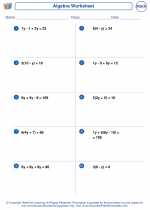General Formula
A general formula is a mathematical expression that represents a rule or a pattern. It can be used to find the value of any term in a sequence or the result of a mathematical operation. General formulas are often used in algebra, geometry, and other branches of mathematics to describe relationships and make predictions.
Examples of General Formulas:
- Arithmetic Sequence: The general formula for the nth term of an arithmetic sequence is given by:
- Geometric Sequence: The general formula for the nth term of a geometric sequence is given by:
- Quadratic Equation: The general formula for solving a quadratic equation ax2 + bx + c = 0 is given by the quadratic formula:
an = a1 + (n - 1)d
where an is the nth term, a1 is the first term, and d is the common difference.
an = a1 * r(n-1)
where an is the nth term, a1 is the first term, and r is the common ratio.
x = (-b ± √(b2 - 4ac)) / (2a)
Study Guide for General Formulas:
When working with general formulas, it's important to understand the variables and their meanings. Here are some key steps to follow when using general formulas:
- Identify the Variables: Take note of the variables used in the general formula and understand their significance in the context of the problem. For example, in the arithmetic sequence formula, an represents the nth term, a1 is the first term, and d is the common difference.
- Substitute Values: Once you have identified the variables, substitute the given values into the general formula. This will allow you to calculate the specific term or result you are looking for.
- Use the Result: After applying the general formula, interpret the result in the context of the problem. For example, if you used the quadratic formula to solve a quadratic equation, consider the meaning of the solutions in relation to the original problem.
- Check for Consistency: Double-check your calculations and ensure that the results obtained from the general formula make sense within the given context. For instance, in a geometric sequence, verify that the ratio between consecutive terms matches the common ratio specified in the formula.
By following these steps and practicing with various general formulas, you can develop a deeper understanding of their applications and become proficient in using them to solve mathematical problems.
.◂Math Worksheets and Study Guides Eighth Grade. Solving linear equations
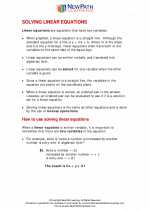
 Worksheet/Answer key
Worksheet/Answer key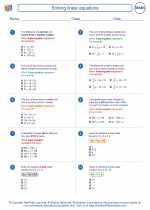
 Worksheet/Answer key
Worksheet/Answer key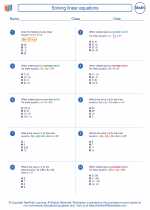
 Worksheet/Answer key
Worksheet/Answer key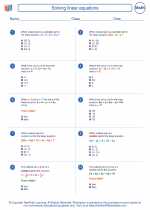
 Worksheet/Answer key
Worksheet/Answer key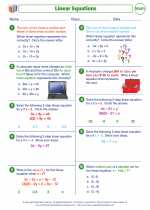
 Worksheet/Answer key
Worksheet/Answer key